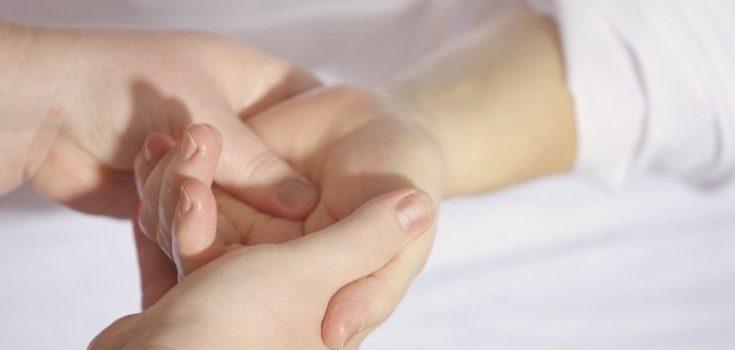 News, Newspaper
News, Newspaper
What massage therapy can do for people with arthritis
Osteoarthritis, rheumatoid arthritis, gout, fibromyalgia, and ankylosing spondylitis are distinct pathologies. Yet, they all have one thing in common: they are all forms of arthritis.
Arthritis: a quick overview
The term “arthritis” can refer to more than 100 different illnesses that affect the joints and other body tissues. An estimated 20% of the population, or about one in five Canadians (adults and children taken together), suffers from arthritis.
The main characteristic of arthritis is recurrent or chronic joint pain, which greatly affects a person’s quality of life. Although the symptoms can vary, depending on the individual and the type of arthritis presented, they can also include loss of mobility, fatigue, joint stiffness and inflammation.
In many cases, arthritis appears after trauma, an infection, or as a result of natural wear and tear on the joints. There is also a genetic component in some cases. Certain forms of arthritis are autoimmune diseases whereby the body starts attacking its own tissue, for example in the case of rheumatoid arthritis.
Select factors can increase the risk of developing certain forms of arthritis, for example:
- Age
- Being female
- Being overweight or obese
- Tobacco use
- Joint injuries
- Sedentary lifestyle
Treatments for arthritis
At the time of writing, there is still no cure for arthritis. However, it is possible to relieve the symptoms and, in certain cases, to slow down the progression of the illness.
Since arthritis exists in many forms and can manifest differently from one individual to the next, patient care should be personalized. Also, both standard approaches (e.g. medication, surgery, physiotherapy, etc.) and complementary therapies (e.g. massage therapy, acupuncture, naturopathy, etc.) are often necessary to manage symptoms.
The benefits of massage therapy for arthritis patient care*
Massage therapy is one of the most frequently used complementary therapies for people with arthritis. It offers the following potential benefits:
- Reduced pain[1][2]
- Increased mobility[3]
- Reduced anxiety[4]
- Better pain management[5]
- Improved quality of life[5]
Although all massage therapy techniques can be adapted to the medical conditions of arthritis patients, those involving lighter pressure and less forceful manipulations should be favoured. These include circular friction, vibration, traction, and stretching.
*Massage therapy is meant to serve as a complementary therapy, which can help relieve the symptoms of a number of health conditions, including arthritis, if adapted to an individual’s medical condition and administered by a competent, well-trained massage therapist. As part of a multidisciplinary approach, it should be provided in conjunction with other health disciplines (medicine, nursing science, physiotherapy, chiropractic, etc.).
What the research says
Massage therapy has been the subject of a number of scientific studies on the treatment of arthritis. The most interesting findings include the following:
- In 2006, researchers in the United States wanted to find out whether massage therapy was effective in alleviating the symptoms of arthritis[6]. They recruited 66 individuals who had been diagnosed with arthritis of the knee. Half of the participants received two one-hour Swedish massages a week for four weeks, followed by one massage a week for a subsequent four weeks. The other half did not receive any massages. After eight weeks, the groups were switched. At the conclusion of the study, the researchers observed significantly reduced pain and stiffness, together with improved physical function and range of motion among the participants.
- A few years later, in 2015, Tiffany Field and her team evaluated the effects of massage therapy on 40 patients suffering from arthritis of the knee[3]. The participants received a 15-minute leg massage each week for four weeks or were placed on a wait list (these formed the control group). At the end of the study, the researchers observed increased knee range of motion and reduced pain.
Better living with arthritis
A healthy and balanced lifestyle can help manage the symptoms of arthritis. If you suffer from arthritis, the following lifestyle habits are strongly encouraged:
- Be active.Even when pain seems like an insurmountable obstacle, regular exercise can help alleviate the symptoms of arthritis. But take it one step at a time! If necessary, consult a kinesiologist: they will be able to help you set up an exercise plan adapted to your condition.
- Eat healthy. A good diet can help you achieve a healthy body weight and give you the energy you need to stay active. Eat more fruit and vegetables and reduce sugar and fat consumption.
- Learn how to manage stress.Stress can have a considerable impact on pain management. Try breathing exercises, meditation, or even relaxation and see if those things help.
To find out more
[1] Field, T. (2014). Massage therapy research review. Complementary Therapies in Clinical Practice, 20(4):224-229.
[2] Perlman, A. et coll. (2012). Massage therapy for osteoarthritis of the knee: A randomized dose-finding trial. PLoS One, 7(2):e30248.
[3] Field, T. et coll. (2015). Knee arthritis pain is reduced and range of motion is increased following moderate pressure massage therapy. Complementary Therapies in Clinical Practice, 21:233-237.
[4] American Massage Therapy Association. (2013). Position statement – Massage therapy for anxiety. Repéré à https://www.amtamassage.org/approved_position_statements/Massage-Therapy-for-Anxiety.html
[5] Crawford, C. et coll. (2016). The impact of massage therapy on function in pain population – A systematic review and meta-analysis of randomized controlled trials: Part I, patients experiencing pain in the general population. Pain medicine, 17(7):1353-1375.
[6] Perlman A. I. et coll. (2006). Massage therapy for osteoarthritis of the knee – A randomized controlled trial. Archives of Internal Medicine, 166(22):2533-8




